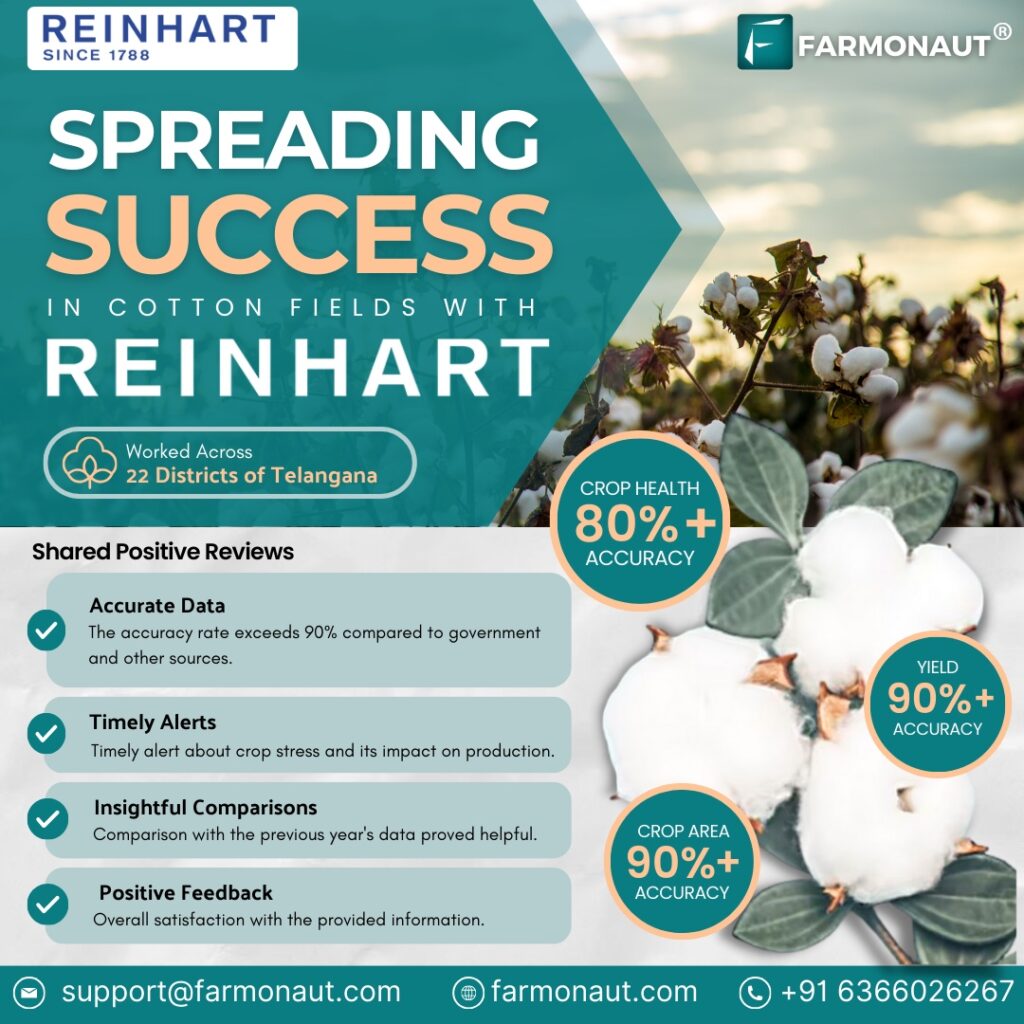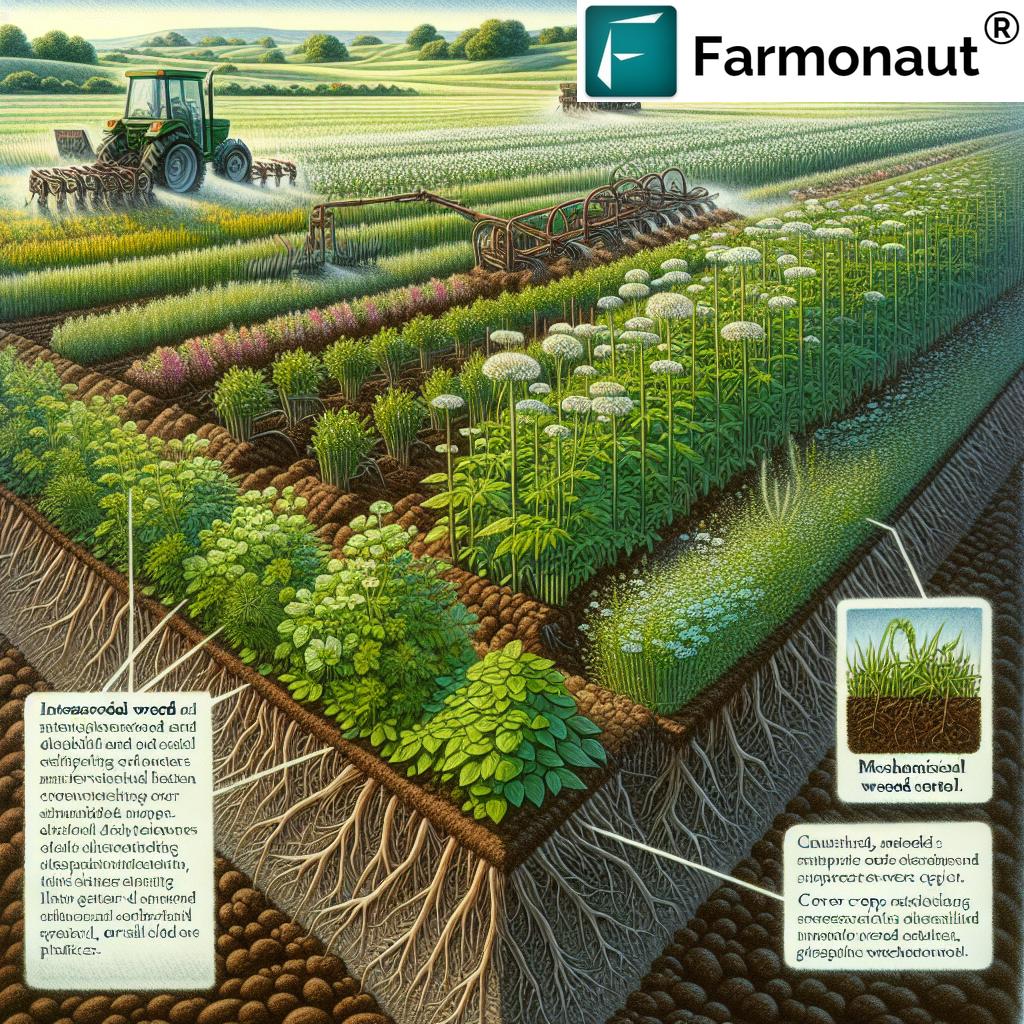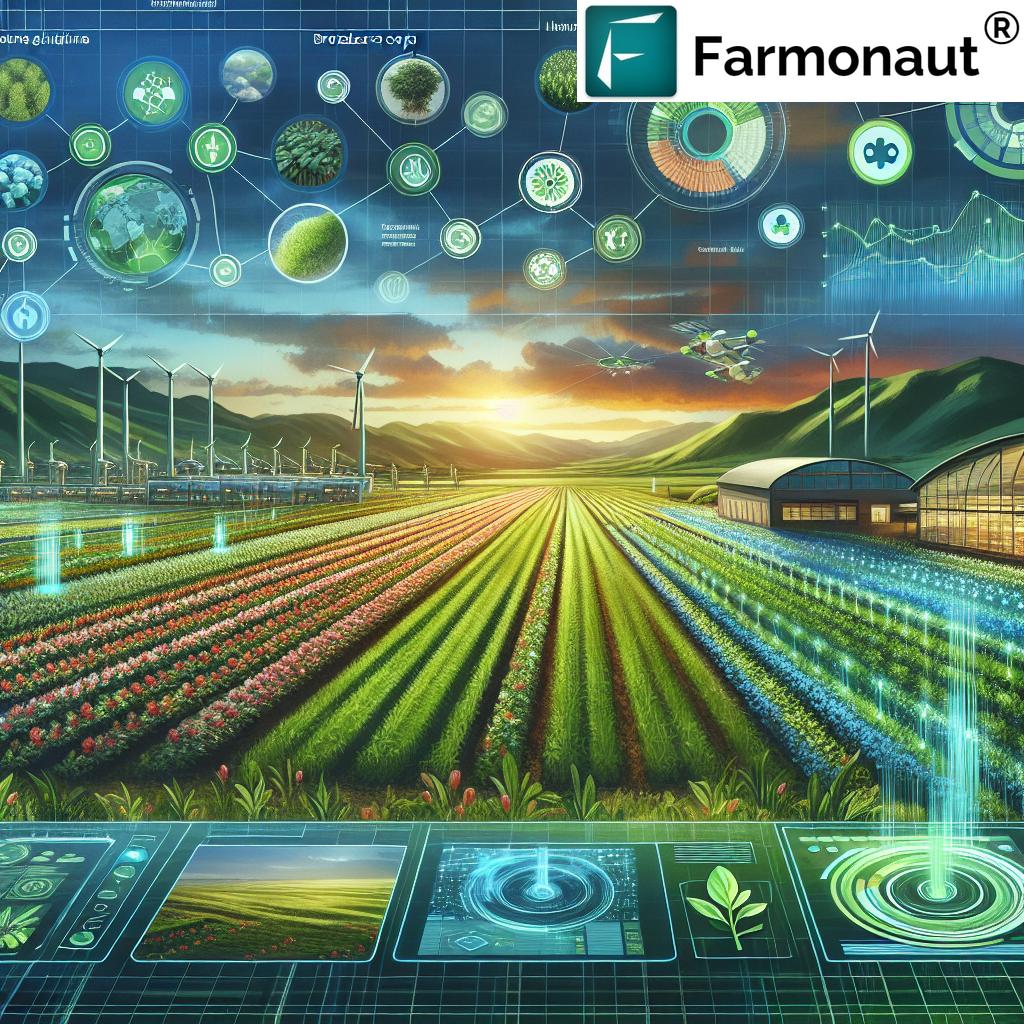Chlorella Farming: 7 Key Benefits for 2025
“Chlorella produces up to 10 times more protein per acre than traditional crops, making it a sustainable superfood for 2025.”
Summary: Chlorella Farming – A Sustainable Frontier in Modern Agriculture
In the global quest for sustainable and efficient agricultural practices, chlorella farming has emerged as a promising frontier with multifaceted benefits. Chlorella, a single-celled green microalga, has garnered significant attention for its remarkable nutritional profile, environmental advantages, and potential applications across agriculture and allied sectors. As we advance into 2025 and beyond, chlorella farming is poised to redefine conventional farming paradigms, offering innovative solutions to the challenges faced by modern agriculture and food systems.
By harnessing chlorella’s distinct high protein content, efficient biomass production, and carbon capture potential, chlorella farming can catalyze the shift towards more sustainable systems. This comprehensive blog explores the science, techniques, and 7 key benefits that make chlorella farming a crucial component of future agriculture.
Understanding Chlorella and Its Cultivation
Chlorella is renowned for its rapid growth rate and high photosynthetic efficiency. This microalga thrives in freshwater environments and can be cultivated in several system types, including controlled conditions such as photobioreactors, open pond systems, or raceway ponds. Each of these methods allow for year-round production, independent of soil quality or climate variability, positioning chlorella as a versatile and resilient crop within modern agriculture.
The cultivation process for chlorella involves optimizing parameters such as:
- Light intensity
- Nutrient concentration
- Temperature
- pH
to maximize biomass yield.
Chlorella typically relies on nutrient-rich water supplemented with nitrogen and phosphorus sources, key nutrients for robust algal growth and high productivity. Recent advances in biotechnology have enabled development of enhanced, high-yield strains with improved resistance to contaminants and environmental stressors, leading to increasing biomass production and consistent quality.
This approach makes chlorella farming less susceptible to soil limitations or climate shocks, enhancing food system resilience for years to come.
“Chlorella farming captures 2 tons of CO₂ per ton of biomass, slashing greenhouse emissions in sustainable agriculture.”
7 Key Benefits of Chlorella Farming for 2025
-
1. Sustainable, High-Protein Source
Chlorella contains up to 60% protein by dry weight, including all essential amino acids. This makes it an excellent alternative protein source for both animal feed and human diets, helping to reduce reliance on traditional protein crops like soy, which are linked to deforestation and excessive water use.
- Outpaces protein yield of conventional crops
- Streamlines livestock nutrition and aquafeed production
- Supports population protein needs in 2025 and beyond with less land and water
-
2. Efficient Biomass Production
With a rapid growth rate and ability to double its mass in 24–48 hours under optimal conditions, chlorella can yield as much as 40 grams of biomass per square meter per day.
- High photosynthetic efficiency and productivity
- Continuous production in photobioreactors or raceway ponds
- Flexibility to scale for industrial, agricultural, and food applications
-
3. Biofertilizer Potential
The residual biomass after chlorella harvesting is rich in nitrogen, phosphorus, and micronutrients. Processing this into biofertilizers can support soil health, decrease chemical fertilizer use, and provide a circular solution to nutrient management.
- Promotes sustainable farming by replenishing soils naturally
- Reduces dependence on synthetic inputs
- Minimizes environmental contamination
-
4. Carbon Capture & Climate Mitigation
Chlorella’s efficient photosynthesis enables it to sequester large amounts of CO₂; for each ton of dry biomass produced, up to two tons of CO₂ can be captured.
- Acts as a natural carbon sink
- Can be integrated in carbon farming and corporate climate strategies
- Improves the environmental profile of agricultural operations
-
5. Wastewater Remediation & Circular Economy
Chlorella can grow in wastewater from agricultural and aquaculture systems by uptaking excess nitrogen and phosphorus, cleaning the water while producing valuable biomass.
- Turns waste streams into a resource
- Minimizes pollution and enables nutrient recycling
- Enables true circularity in agro-industrial systems
-
6. Resource Efficiency & Land Independence
Chlorella farming is independent of soil quality and can be run in non-arable areas, freeing up fertile land for other needs. It generally requires less water per unit protein produced compared to conventional crops.
- Opens up marginal lands for productive use
- Conserves water, a critical resource for 2025 and beyond
- Enables urban or vertical farming implementations
-
7. Versatile Applications Across Sectors
Chlorella biomass can be used for human nutrition, animal feed, biofertilizers, natural pigments, pharmaceuticals, bio-based pesticides, and industrial bioproducts.
- Broadens markets for producers
- Supports allied industries: cosmetics, natural dyes, forest restoration, and more
- Reduces reliance on chemical-based products
Benefits Comparison Table: Chlorella Farming in 2025
| Benefit Name | Estimated Value / Statistic | Environmental Impact | Sustainability Relevance |
|---|---|---|---|
| High Protein Content | ~60% protein by dry weight | Reduces need for land-intensive protein crops, conserves habitats | Supports food security with less land and water |
| Efficient Biomass Production | ~40g/m²/day | Lower carbon footprint per kg product | Enables year-round biomass for multiple uses |
| Biofertilizer Potential | High N & P, multiple micronutrients | Reduces chemical runoff and eutrophication risks | Promotes regenerative agriculture, improves soil health |
| Carbon Sequestration | 2 tons CO₂/ton biomass | Lowers greenhouse gas emissions from agriculture | Supports climate goals and carbon agriculture incentives |
| Wastewater Treatment | Uptake of N/P up to 90% | Limits pollution & promotes water reuse | Drives circular economy in agri-food systems |
| Resource Efficiency | 10x protein/acre vs. soy | Saves land & water | Enables farming on marginal/urban land |
| Versatile Applications | Feed, food, fertilizer, biotech | Decreases reliance on toxic chemicals, supports green products | Benefits wide range of allied sectors |
Agricultural and Environmental Perspectives on Chlorella Farming
Producers are seeking innovative solutions to balance growth with environmental stewardship in agriculture. Let’s analyze how chlorella farming supports this:
- Protein source for animal feed: Chlorella integrates into livestock diets, helping to reduce reliance on soy and other resource-intensive feedstocks.
- Biofertilizer solutions: The by-product biomass boosts soil fertility naturally, lowering the need for chemical synthetic fertilizers.
- Carbon sequestration: Through its high rate of photosynthetic efficiency, chlorella farming can be a key component in carbon footprint reduction strategies for the entire agricultural sector.
- Wastewater valorization: Turning a waste problem into a sustainable resource for aquaculture and farming systems.
Chlorella farming not only provides multiple benefits for the agriculture sector, but also aligns closely with sustainability principles and the SDGs (Sustainable Development Goals) outlined by major global organizations for 2025 and beyond.
Economic and Technical Considerations in Chlorella Farming
While the advantages of chlorella farming are clear, broad adoption requires overcoming certain economic and technical challenges:
- High Initial Investment: Setting up photobioreactor systems or advanced raceway ponds involves significant capital investment. Careful feasibility studies and cost-effective design are critical for new projects.
- Technical Skills: Maintaining contamination-free cultures and optimizing growth parameters demands skilled labor and ongoing monitoring.
- Research and Development: Ongoing research in bioprocessing, automation, and biotechnology is reducing production costs and simplifying management.
- Integration with Existing Systems: The most efficient chlorella farming operations are those where integration with existing large-scale farm management systems or fleet and resource management is achieved – maximizing synergies, improving resource use, and boosting farm profitability.
Despite these challenges, growing demand for sustainable solutions is driving policy incentives and investment in this sector. The future of chlorella farming is increasingly supported by technological innovation and new market applications.
System Integration and Synergies with Chlorella Farming
An important aspect of 21st-century agriculture is the integration of innovative crops like chlorella into existing systems:
- Aquaculture: Chlorella biomass is a premium feed additive for fish and shrimp, increasing growth rates and improving sustainability profiles of aquaculture operations.
- Livestock: Dietary integration has been shown to improve animal gut health and immunity, while reducing dependency on soybean meal and other imports.
- Circular agriculture: Facilities can combine wastewater treatment, chlorella cultivation, and fertilizer production, achieving zero-waste goals.
- Digital farming: Utilizing satellite-based crop monitoring tools can help optimize chlorella site selection and resource management, boosting overall system productivity.
This integration not only increases economic return per input but also helps stakeholders comply with evolving environmental regulations and sustainability certifications.
Applications Beyond Agriculture: The Win-Win Frontier
The versatility of chlorella farming is exemplified by its expanding role across allied sectors:
- Nutraceuticals & Human Nutrition: Being rich in vitamins, antioxidants, protein, and micronutrients, chlorella is used as a superfood supplement and functional ingredient in future food systems.
- Natural Pigments: The rich green pigment (chlorophyll) is utilized in cosmetic and colorant industries, promoting natural alternatives to synthetic colors.
- Cosmetics: Bioactive compounds from chlorella are increasingly integrated into eco-friendly skincare lines, leveraging anti-aging and anti-oxidant properties.
- Bio-based agrochemicals: Certain bioactive extracts from chlorella can be developed into natural pesticides, supporting chemical reduction efforts.
- Forestry and Land Restoration: Microalgae cultivation adjacent to tree nurseries provides fast, sustainable organic inputs to support landscape regeneration and forest advisory projects.
Future Outlook for Chlorella Farming in 2025 and Beyond
As of 2025, chlorella farming stands at the intersection of biotechnology, sustainable agriculture, and advanced environmental management. Several trends will shape its future:
- Increased global protein demand: Chlorella’s high yield and protein density make it central for addressing both food and feed market shortages.
- Policy and sustainability incentives: Governments are recognizing climate benefits and offering support for sustainable systems that feature carbon sequestration and waste recycling.
- Ongoing advances in cultivation: Next-generation photobioreactor designs, precision farming approaches, and AI-driven advisory services will further reduce costs and open up new frontiers.
- Expanding applications: From traceable ingredient supply enabled by blockchain to product traceability and eco-certification, chlorella’s relevance is widening in agriculture, food, and environmental sectors.
With these innovations, chlorella farming will remain a core solution for improving productivity, reducing environmental impacts, and supporting the growth of sustainable food systems worldwide.
How Farmonaut Supports Sustainable Agriculture with Next-Gen Technology
At Farmonaut, we are committed to empowering the agricultural sector with data-driven insights and cutting-edge tools that make sustainability actionable and measurable. Our platform brings significant value to innovative farming systems, including those implementing chlorella farming:
- Satellite-Based Monitoring: We provide real-time monitoring of crop health, water conditions, and soil quality using advanced satellite imagery, supporting chlorella cultivation from site selection to yield optimization.
- AI-Driven Advisory: Our Jeevn AI system offers real-time actionable advice for resource optimization, growth parameter adjustments, and risk management.
- Resource Management Tools: Integrated fleet and resource management modules streamline operations, reducing downtime and maximizing efficiency in chlorella production systems.
- Environmental Impact Tracking: With built-in carbon footprinting solutions, we help stakeholders monitor and enhance the environmental benefits of their farming activities.
- Blockchain-Based Traceability: Our traceability solutions ensure the provenance and authenticity of chlorella-derived products, fostering greater consumer trust and transparency.
-
Accessibility & Affordability: All our insights are available via
 web app,
web app,
 Android, and
Android, and
 ,
,
as well as via API and developer documentation for seamless integration into your digital systems.
Our modular platform is designed for all scales—from innovative startups piloting chlorella farming in 2025, to major enterprises integrating sustainable systems into large-scale operations. By combining satellite imagery, AI, blockchain, and a user-friendly interface, we are lowering the barriers for sustainable, future-ready agriculture.
Farmonaut Private Subscriptions
FAQs: Chlorella Farming
Q1. What is chlorella farming and why is it important for sustainability?
Chlorella farming refers to the cultivation of chlorella microalgae using systems like photobioreactors, open ponds, or raceway ponds. It is crucial for sustainability because chlorella rapidly produces high-protein biomass using minimal land and water, sequesters carbon, and supports circular agricultural systems.
Q2. How much protein does chlorella contain compared to soybean or other crops?
Chlorella typically contains up to 60% protein by dry weight, while soybeans contain about 36%. This makes chlorella one of the most protein-dense crops—and significantly more efficient in terms of protein yield per acre.
Q3. Can chlorella be cultivated in any location?
Yes, because it is aquatic and thrives in controlled systems or even with wastewater reuse, chlorella farming is not limited by soil quality or geography—opening up marginal, urban, or recycled land for productive use.
Q4. What are the main environmental advantages of chlorella farming?
Key environmental advantages include: high carbon sequestration, limited land and water use, biofertilizer production replacing chemicals, wastewater treatment, and reduced pollution and habitat destruction.
Q5. What role does Farmonaut play in supporting sustainable chlorella farming?
Farmonaut enables sustainable chlorella farming by providing satellite-based monitoring, AI advisory, fleet/resource management, environmental tracking (including carbon footprinting), and blockchain-based traceability—making sustainable practices accessible and efficient for all scales of agriculture.
Q6. Is chlorella only used as feed or biofertilizer?
No, chlorella biomass is versatile—it’s used in human nutrition (as a supplement), animal and aquafeed, natural pigments, cosmetics, forestry support, pharmaceuticals, and even as a basis for bio-based pesticides and other green products.
Q7. How can I get started with digital monitoring of my chlorella or algae farm?
Simply access the Farmonaut web or mobile app, or connect to our API for advanced integration. You’ll receive real-time insights, resource tracking, and environmental data tailored to your farm.
In conclusion, chlorella farming provides a clear pathway toward greener, more efficient agriculture. By harnessing the unique properties of this remarkable microalga, farmers and producers can achieve higher productivity, robust environmental sustainability, and long-term economic resilience. As our food systems face greater challenges from climate and resource pressures in 2025 and beyond, chlorella farming will be an indispensable solution in a truly sustainable future.










